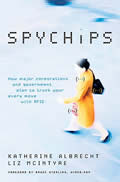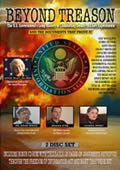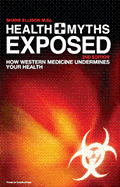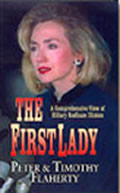ABUSE
OF FORCE
PART 2 of 3
By Jon Christian Ryter
July 10, 2008
NewsWithViews.com
When 48-year old Horace Owen broke into the Fort Lauderdale home of MacArthur Hodges on June 12, 2005, he was high on cocaine and hallucinating. Owen was screaming that someone was trying to kill him. Hodges called the Broward County Sheriff's Department to get the intruder out of his house. Deputies pulsed Owen. He collapsed. He was pronounced dead an hour later at Memorial Regional Hospital in Hollywood, Florida. Ignoring the electrical charge that cause the heart arrhythmia, the coroner ruled that Owen's death resulted from pharmacological intoxication—due to a cocaine overdose. His crime? Breaking into someone's home because he thought his life was in danger. It was—at the hands of Broward County Sheriff's deputies.
Mental patients like drug addicts use chemical mood enhancers that compromise heart rhythm when electrical shock is introduced. On Jan. 12, 2005 the parents of 30-year old Greg Saulsbury called 911 asking for help with their son who was mentally ill. They were trying to calm him down. Instead of paramedics, Pacifica, California police arrived a few minutes later. The Saulsbury's assured the police their son had calmed down and they did not need help. Officers attempted to handcuff Saulsbury and take him into custody. He fought back. Police pulsed him several times. Saulsbury cried out to his father for help. When the elder Saulsbury tried to help his son, police pulsed him as well. As police dragged the father from the room, 30-year old Greg Saulsbury collapsed and died.
Two days before Christmas in 2004 Sacramento, California mental hospital patient Ronnie Pino, 31 shattered a glass door at the mental facility. Police were called. During the struggle to take him into custody, Pino was subdued twice with a stun gun. He died in the medical ward of the county jail.
Patrick Fleming, 35, of Metairie, Louisiana had been arrested on drug charges several times. On Dec. 4, 2004 police sought to arrest him on a warrant of criminal family neglect (deserting a spouse and children and rendering them destitute). Police shocked him once as they attempted to cuff him. When he was booked, he became combative again. He was stunned again. It appears he was not given medical attention. He died in his cell the next day.
The parents of Ricardo Zaragoza, 40, of Elk Grove, California could not get their son to go to the hospital for scheduled mental health exam. Zaragoza was diagnosed as paranoid schizophrenic. While he was taking his medications, he had not eaten in several days. When he refused to go to the hospital, his parents called 911 on Nov. 8, 2004. Sacramento sheriff's deputies arrived at the home. Zaragoza was in his bedroom and refused to come out. Deputies entered the bedroom and sprayed him with pepper spray and shocked him twice with a stun gun. Zaragoza stopped breathing and was pronounced dead. Cardiologist Dr. Kathy Glalter, a UC Davis Medical Center electrophysiologist who specializes in sudden death heart rhythm orders was at a loss to explain not only Zaragpza's death but that of Gordon Rauch as well. Both men were diagnosed with mental illness. Both were taking medications. Both were shocked with stun guns. And both died as a result of the electrical shock. Glaltier said that much more research is needed to definitively show the effect of stun guns on people taking prescription medications or illegal drugs, or whether those with preexisting heart conditions are more at risk of sudden death. Dah.
Like Zaragoza, Rauch met his death at the hands of the Sacramento sheriff's department. His appointment with the grim reaper took place on Aug. 17, 2003. Rauch's father called the police and said his son, who was medicated with psychotropic drugs, had threatened to kill him. Police said Rauch charged them when they attempted to take him into custody. Two officers shot him with their stun guns simultaneously. Rauch fell to the floor. Officers said he "went limp" when they cuffed him. He died about an hour later.
Neighbors called Miami-Dade police on Sept. 20, 2004 to report that 40-year old John Merkle, a lawyer with a serious drug problem was running through the backyards of the neighborhood with a big stick, acting erratically. Police found him in an abandoned home beating the walls and smashing the windows with the stick. Ordered to drop the stick, Merkle did so. But, according to police, when they attempted to take him into custody, he fought back. They shot him with a stun gun. Police said Merkle was feverish and asked to lay down. Police ordered him to lay on his stomach. Merkle stopped breathing. Police said he was high on cocaine. The coroner ruled Merkle's death was caused by excited delirium associated with cocaine use.
Experienced police officers are trained to recognize drug intoxication. With police departments around the country seeing an influx of sudden death due to "suspects" who experience cardiac arrest triggered by cocaine or methamphetamine intoxication it would seem, by this time, police officers would have an inkling that known addicts were likely candidates for cardiac arrest if shocked multiple times with a stun gun. It would seem the risk of killing suspects who [a] do not pose a deadly threat to law enforcement officers who are [b] attempting to arrest them for misdemeanor offenses whose penalty would likely be a fine or a weekend in jail. When police officers abuse the authority with which they are entrusted, they need to be held accountable. Likewise, when a coroner or medical examiner fabricates causes of death to protect the police or the purse of the county, that coroner or medical examiner needs to lose his or her medical license and face appropriate charges.
To explain how otherwise healthy people could suddenly collapse and die after being shocked several times with long bursts from a stun gun, medical examiners coined the term "excited delirium" to explain sudden death from electro-muscular disruption. Unfortunately, "excited delirium" is not a clinical term nor does it describe a recognized medical condition. It's a made-up phrase for a made-up condition that exists only to insulate law enforcement agencies from allegations of excessive force, and to attempt to absolve them of blame for killing subjects who, 99 times out of a hundred committed minor misdemeanors that would result in fines and not imprisonment. When police officers use deadly force to subdue US citizens—even lowlife US citizens—over trivial matters, then those police officers must be forced to answer for the deaths caused by those incidents. Police officers cannot be allowed to use deadly force unless their lives are threatened by equal deadly force.
Yet we are asked to accept, as rational, police officers using weapons only slightly less lethal than firearms, to subdue subjects whose only crime might be disrespecting them? Or, a college senior who refuses to surrender a microphone at a John Kerry Rally at the University of Florida? Or a 15-year old autistic boy who runs across four lanes of traffic, forcing a couple of overweight cops to chase him? Or, a woman whose only crime was knocking over a cardboard floor display rack in a Hallmark store?
|
Subscribe to the NewsWithViews Daily News Alerts! |
On Nov. 26, 2005 Tracy Rene Shippy went to a Hallmark Gold Crown store in Fort Myers, Florida and asked store employees to call the police because she had just been in a fight. Before the cops arrived, Shippy knocked over the display rack. Employees called the police again and reported that an unruly customer was agitated and knocking over displays. It appears that Shippy may have been suffering from cocaine toxicity and, if so, she very likely simply stumbled into the display. When police arrived, one officer tackled Shippy and handcuffed her. That agitated Shippy even more. Sgt. Joseph More of the Lee County Sheriff's Dept. shot her with a stun gun. Instead of falling with flaying arms, Shippy became even more agitated and began kicking the two deputies who were dragging her to the police cruiser. More shot her with the stun gun at least one more time. Each burst was reportedly longer than the one before it bcause they did not seem to have any affect on Shippy. Finally, Shippy began foaming at the mouth. She was suffering from cardiac distress. There is no police transcript available that details how many times Shippy was shocked. Remember also, that throughout this ordeal, Shippy's hands were handcuffed behind her. For part three click below.
Click here for part -----> 1, 2, 3,
� 2008 Jon C. Ryter - All Rights Reserved
[Read "Whatever Happened to America?"]














